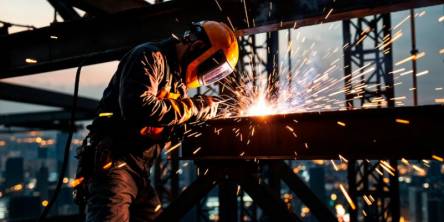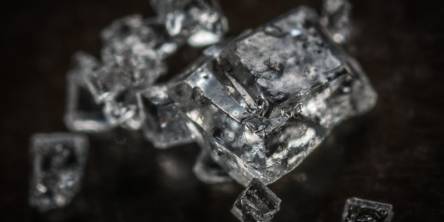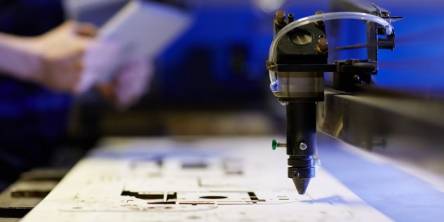Complete Guide to Tungsten Metal
Tungsten is a Swedish word which means heavy stone. Its chemical symbol is W, as it is also known as Wolfram, lapis ponderosus. The name Wolfram was given by a medieval German smelters. He found that tin ores had lower yield due to the presence of tungsten metal in them. It was found that tungsten was responsible for the consumption of tin similar to a Wolf and hence the name “Wolfram”.
In 1783, the two Spanish chemist de Ehujar brothers isolated tungsten in its purest form. Tungsten is a greyish-white, lustrous metal. It is solid at room temperature, however, at temperatures 1650°C or above it shows highest tensile strength. It has excellent corrosion resistance and most importantly used for making alloys. Alloys made by Mixing Tungsten with Magnesium and Calcium glows and produces phosphorescent which is used for making light bulbs. Most of these unusual properties are due to the half-filled 5d electron shell. Based on these properties, tungsten and its alloys have many important applications.
Tungsten ores
Tungsten is found in several ore forms. Its two main commercially mined ores are wolframite and scheelite. Wolframite is the most abundant resource of tungsten, as it accounts 70% of the total tungsten world.
- Wolframite: It is the chief ore of the metal tungsten. Wolframite is a reddish-brown to grayish-black lustrous mineral. It is a strong and quite dense material. Wolframite mainly occurs in quartz veins and pegmatites rock. Separation method includes gravity separation (spirals, cones, tables), in combination with magnetic separation. Due to its high melting temperature, it is an ideal material for electric filaments machining tungsten tools as well as armor-piercing ammunition. Notable occurrences: Nanling Range, China; Colorado, USA; Russia; Bolivia; Korea; England; Portugal; Myanmar and Australia.
- Scheelite: It is a calcium tungstate mineral. Scheelite is a subordinate ore of tungsten. Czochralski process is used for the synthesis of Scheelite. At times it is used to imitate diamond, as a scintillator. Its ore have a color that range from golden yellow, brownish green to dark brown. Its gravity is high and its hardness is low.
Notable occurrences: Hollinger Mine, Ontario, Canada; Saxony, Germany; Australia; California, Arizona, Utah and Colorado, in the USA; South Korea; England; and China.
Extraction Method of tungsten:
The common extraction methods are surface mining and underground mining. The choice of methods depends upon several factors such as physical and chemical properties of the mineral, tonnage, occurrence, geometry and the depth of the ore body.
- Surface mining: It is also known as Open-pit mining. This method is utilized if near-surface ore body is massive. The whole ore body is mined during the extraction operation. Hydraulic mining is commonly used in the reclamation of tungsten.
- Underground mining: Underground mining is preferred as surface mining is an expensive process. Underground process tungsten ore is mined in stops. It contains a number of horizontal levels at various depths below the surface.
Tungsten Uses & Applications
Tungsten has huge industrial application mainly due to its rare properties.
- It is useful for glass-to-metal seals due to its exceptional thermal expansion properties.
- It is used in electrical contact points for car distributors.
- Winding and heating elements of electrical furnaces are made of Tungsten.
- Tungsten and its alloys are used extensively for filaments for electric lamps, television tubes.
- It serves a wide range of application in the metal evaporation work.
- Fluorescent lighting use calcium and magnesium Tungstate.
- Machining Tungsten carbide is essential for mining, metal working and petroleum Industries.
- Tungsten disulphide is used as high-temperature lubricant.
- The chemical and tanning industries use tungsten salts.
- Tungsten bronzes and other tungsten compounds are used in paints
- It has missile and high-temperature applications.
- Devices with high speed application contain alloys of Tungsten.
Similar Articles
When you see a steel ship in the harbor, the first impression is usually sheer scale.
Explore CNC turning—its components, process, benefits, applications, and future trends shaping modern precision manufacturing in various industries.
In the competitive industry of car manufacturing, attaining exceptional performance along with an innovative design needs the incorporation of modern manufacturing technologies
Facing delays, quality issues, or supply chain problems in hardware manufacturing? Learn the top 7 challenges—and practical fixes—to streamline production.
In the rapidly advancing landscape of high-tech manufacturing, electronics, and materials science, diamonds are no longer just gemstones they’re high-performance materials redefining what’s possible in technology.
A business in the manufacturing industry today has to ensure that it chooses the precision-engineered components suppliers keenly since the competition is very stiff
Selective Laser Sintering, or SLS, has established itself as one of the most reliable and widely used 3D printing technologies. This method is valued for its ability to produce complex, durable, and high-quality parts without the constraints of traditional manufacturing.
In the retail and display industry, the visual appeal of products is paramount. Customers are constantly drawn to displays that are not only eye-catching but also provide an immersive experience.
As previously established, CO2 laser technology operates by shining a high-power infrared beam on a mixture of gas that contains carbon dioxide, nitrogen, and helium. This technology is well known for the fact that it is able to engrave onto a variety of materials such as wood, glass, plastic, leather, and even some metals with high precision and without contact.









